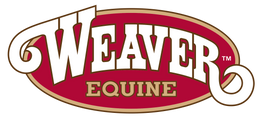I find it amazing that the human brain tells us to look places that we literally are trying to avoid.
For example, if a person focuses on an object on the side of the highway, they will naturally drift towards that object. My husband works in road construction and noted many years ago that a person could drive an 80-mile stretch of highway with no issues and then manage to hit the one tree in the median. So, it is apparent that where you look is where you go- whether it is intentional, or not. The concept is important in many facets of life, but we can help our own riding and our horse if we remain aware of it. Are you ready to be clearer, send more direct signals to your horse, and gain balance and success by doing so? If so, keep reading!
Since I was a young kid taking riding lessons I was told that if I looked down at the ground, shortly after that is likely where I was to find myself. Since those times, I find myself helping people fight the same tendency. Therefore, I am going to highlight one of the most helpful riding secrets there ever was. Look where you want to go! To succeed in any area of life, it is usually best if you have certain “landmarks” that help make sure you stay on track. If you focus on what is up and ahead, you will eventually start knocking out big goals.
If you ride a horse and find your loyal steed doing a bit of “drunk driving” as I like to refer to it (weaving around, speeding up and then slowing down, etc.), you may become irritated, thinking that the horse is testing you/is untrained/etc. In such cases, my recommendation is to check yourself first. Are you staring at the back of your horses’ head, as if it has signals spelling out their next move? If so, you are pooling your weight right over your horses’ withers (the bony ridge between the shoulder blades) which is uncomfortable for your horse. The response depends on the horse but usually is represented through one or all of the scenarios above. This is the horse’s way of conveying the following message: “THAT’S ANNOYING, STOP!”
Worse, have you found yourself in the dirt with your horse standing above you appearing as equally bewildered as you are? It is likely that you were staring straight at either the back of that head, the ground, or an object that you were trying so hard to avoid, (i.e. a fence, gate, you name it) and you knocked yourself off balance in the process.
One of the questions I recently got during a lesson was whether a child could eventually stop looking where they were going, as they gained more strength and experience with directing the horse with the reins and leg pressure. My answer was a strong “no.” I responded that if anything, where the rider focuses actually becomes more important each ride.
If a horse can feel a fly land on their back, then they will undoubtedly feel our weight shift wherever we put it. For example, if you turn your head to the right, your shoulders are going to rotate, followed by your hips, and haphazardly, your legs in the same direction. The more weight you carry, the more emphasis your moves provide.
If you want to practice it, set up 3 barrels, stare straight at each barrel as you go around them and see how many shin dents and bruises you leave with. Just kidding- come see me and I will ensure that you remain “dent-less” 😉
But really! During your next ride, find focal points around your riding area that cause you to remain focused on looking forward. If you are in a round pen, keep your eyes focused on places along the top rail of the fence approximately 10 feet in front of your horse’s nose. When you do so, you should notice that your shoulders are back (not slouched) and aligned with your hips and heels, making sure your heels are lower than your toes.
Making these small adjustments may be what changes your time with your horse from constant frustration to a more balanced, enjoyable ride! I can also guarantee that it is a solid life lesson. Look up, never behind or down!

